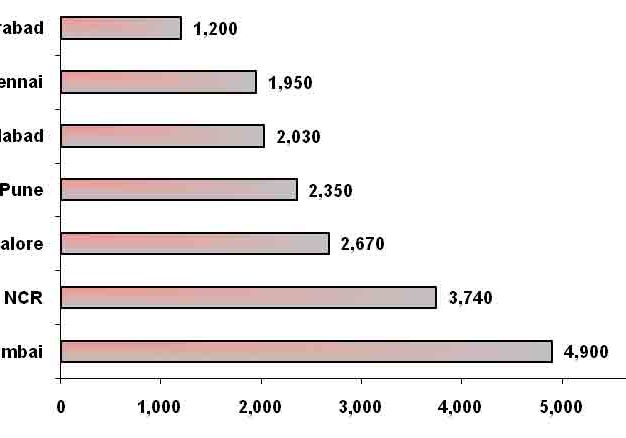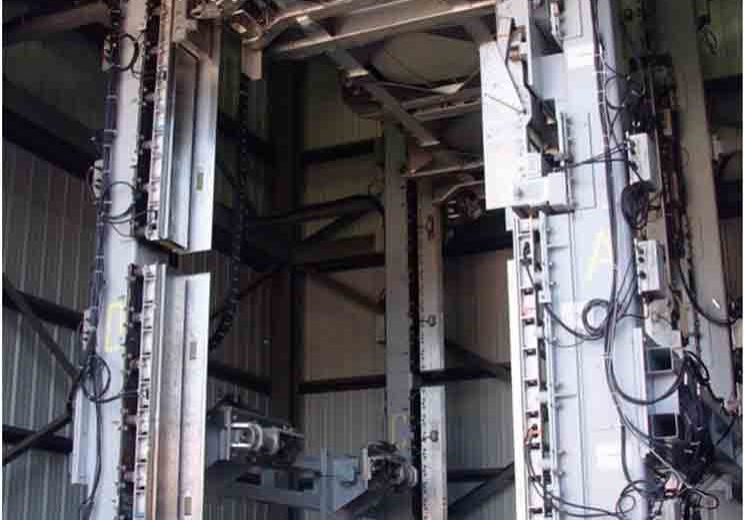40 Years of Elevator-Code Standardization
May 1, 2012

An overview of the history and role of various industry codes
This year marks the 40th anniversary of the first meeting of the European Committee for Standardization (CEN)/Technical Committee (TC) 10 Lifts, Escalators and Moving Walks Committee, held in January 1972. However, attempts at code standardization initially began in Europe in the 1950s. When international trade grew after World War II, the differing and sometimes conflicting safety codes of each country posed problems. In April 1972, Preben Jacobsen of Otis Denmark, one of the first members of TC 10, wrote a memorandum describing developments that led to the establishment of the TC 10 technical committee as part of CEN. The following article discusses some points from that memo and elaborates on their development.
Early Standardization Attempts
The first standardization initiative was made in Italy by CNR, the Italian National Council for Technical Research, which asked ENPI, the National Council for Preventing Accidents, to organize a meeting of experts to develop safety codes for passengers and freight elevators. The meeting was held May 20-24, 1957, in Milan, with delegates consisting of authority representatives, elevator inspectors and elevator companies from several European countries and organizations in attendance. It was learned that differing opinions concerning safety existed, though risks connected to elevators should be the same in all countries. This meeting established an international committee to prepare safety rules for the construction and installation of passenger and freight elevators, as well as dumbwaiters. These rules were to be used as a model for countries that lacked proper standards, and to extend or amend existing safety codes. The committee was called Comission Internationale Pour la Réglementation des Ascenseurs et Monte-Charge (CIRA). F. Spoon, head of Dutch Lift Inspection, was elected chairman. In the beginning, committee members were comprised mostly of elevator inspectors, but the European Federation of Elevator Companies (FEM Section VII) later had two representatives.
Early on, the International Labor Organization (ILO) became interested in CIRA’s work. Though its primary interest was the protection of workers in freight elevators, the organization was prepared to implement CIRA requirements for passenger elevators as well. CIRA wrote its paper in a conditional form (“should” instead of “shall”), which was customary for ILO, so the text could be read as recommendations. It was completed in 1970 and given to ILO for adoption. Unfortunately, the recommendations were not accepted, because they asked for doors for all passenger cars, and this was too much for some countries in ILO. It is unknown as to what extent CIRA recommendations were used as a model for updating national safety codes. However, one example of this was Finland, where safety requirements for elevators were extended in 1970 to elevators traveling at speeds of up to 6 mps in an observation tower. This was done using CIRA recommendations, as the existing national rules were only valid for travel up to 1.5 mps.
EEC Actions
The European Economic Community (EEC) decided in 1966 to remove duties and quantitative trade restrictions between member countries. At the same time, they decided to study possibilities that would remove technical barriers to trade. This meant different safety codes, which would prevent free movement of goods. In 1969, the EEC council drew up a program for removing these barriers for elevators and cranes. For this goal, a common safety code for EEC countries was needed, and a working group was established to prepare the code.
Verdiani of Italy called the group together, which consisted of representatives from EEC member countries. The first meeting was held in Brussels in 1970. FEM Section VII was not included in the meeting, but Verdiani quickly learned that FEM could help complete the work. The FEM Section VII technical committee established a working group to deliver a draft to Verdiani by the end of October 1971. The group based its work on CIRA recommendations, making its own additions and clarifications. The draft, in English, German and French, was delivered to Verdiani. After further discussion with working-group members, Verdiani concluded that the best way to implement EEC requirements was through a procedure called “reference to standards.” This meant they had to be published as a European Standard.
The authority to publish European Standards had been given to the European Committee for Standardization (CEN), which was created in 1961 by the standardization bodies of EEC and EFTA countries. A separate committee called the European Committee for Electrotechnical Standardization (CENELCOM) existed for electrical equipment. As mechanical and electrical issues are combined in elevators, the European Commission decided the elevator standard was to be dealt with in CEN. At their 1971 meeting in Oslo, Norway, the CEN council approved the inclusion of elevators in the CEN working program. A new working group, WG 10, was established in CEN to draw up elevator safety-code standards.
Work of CEN/TC 10
The first meeting of CEN/WG 10 was held on the premises of AFNOR (French national organization for standardization) in Paris on January 24-27, 1972. The secretariat of the work group was given to AFNOR, and the meeting was attended by 15 delegates from eight European countries. Traizet of France was elected chairman. The group decided to consider the safety requirements for passenger and goods elevators, dumbwaiters, escalators and other passenger-lifting equipment. CIRA recommendations as amended by the FEM work group served as a basis. It was decided members would give their comments on the paper before the next meeting in October 1972.
In the mid 1970s, WG 10 was named a technical committee. The CEN/TC 10 Lifts, Escalators and Passenger Conveyors Committee, as it was originally known, is the oldest operating technical committee in CEN. In the beginning, it had no official work groups, but a team of experts formulated the texts between plenary meetings. The draft standard prEN 81-1 was completed in 1975 and sent to CEN member countries for voting. The first version of EN 81-1: Safety Rules for the Construction and Installation of Lifts – Part 1: Electric Lifts was published in 1977. This standard included national deviations in several clauses and there was not yet a European Directive, to make implementation of this standard compulsory.
In the October 1977 committee meeting, two official work groups were created. WG 1 was to draw up rules for hydraulic elevators and make corrections to EN 81-1. WG 2 was to draw up rules for escalators and moving walks. Karl Stutz of Schindler was elected convener for WG 1, and Jürgen Kühn of Otis was elected convener of WG 2. Meanwhile, Felix de Crouy-Chanel of Otis France was elected chairman of CEN/TC 10. He acted as chairman until 1988, when he was replaced by Pierre Istace of Otis, France. In 1982, WG 2 completed the escalator standard, and it was published in 1983 as EN 115:1983: Safety Rules for the Construction and Installation of Escalators and Passenger Conveyors. A new edition of this standard was published in 1995, as it had to be adapted to the European Union Machinery Directive.
WG 1 continued to correct the errors and deficiencies found in the first edition of EN 81-1, and, in 1985, a revised standard, EN 81-1:1985, was published. European Directive 86/312/EEC made reference to this standard, which meant member countries could not refuse to accept compliant elevators. For hydraulic lifts, WG 1 appointed some hydraulic experts. It was difficult to draw up the standard due to the number of different hydraulic elevator constructions on the market and each manufacturer wanted its own version accepted. Meanwhile, the authorities of some countries, especially Nordic ones, were not prepared to accept hydraulic elevators without pawl devices. After much debate, a compromise was achieved, and the standard was sent for voting in 1987. It was not unanimously accepted but was nevertheless published in 1987 as EN 81-2:1987: Safety Rules for the Construction and Installation of Lifts – Part 2: Hydraulic Lifts. In 1990, European Directive 90/486/EEC made reference to this standard.
In 1985, European communities decided to issue so-called “new approach directives” concerning technical equipment. They provided only essential safety requirements (ESRs) for the equipment concerned, and detailed requirements were given in harmonized standards. The new approach directive for lifts (95/16/EC) was issued in 1995, and standards EN 81-1 and EN 81-2 had to be adapted with the ESRs of this directive. New editions of EN 81-1 and EN 81-2 were published in 1998. With amendments A1, A2 and A3, they are still valid and used in many countries outside Europe. In the European Union, the solutions provided therein are regarded as safe and deviating solutions that must be approved by a Notified Body.
The Lift Directive increased TC 10’s workload. In 1992, Pierre Bianchini was elected chairman of TC 10. He began to create a more effective committee and succeeded in making English the only working language at meetings. Prior to that, German and French could be used, and all speeches were later translated into other languages. Bianchini also reorganized the committee and created new working groups to more quickly draw up standards needed because of the Lift Directive. Now there are more than 30 standards or technical specifications issued by CEN/TC 10.
The Role of ISO
In the International Organization for Standardization (ISO), there is an elevator technical committee called ISO/TC 178. The standardization of elevator hoistway dimensions became necessary when the building industry began using prefabricated concrete elements. Therefore, Building Construction Subcommittee 7 of ISO/TC 59 established WG 3, Mechanical Transporting Systems, to standardize elevator dimensions. In 1976, this received the status of subcommittee, named TC 59/SC 12. In 1980, the subcommittee was upgraded to TC 178: Lifts, Escalators and Moving Walks. In the beginning, the main achievement of ISO’s work was standard ISO 4190: Passenger and Service Lifts (U.S.: Elevators and Dumbwaiters). Part 1: Lifts of Classes I, II and III was published in 1980. Later, additional parts were published, and the standards have been kept up to date.
ISO did not originally deal with safety codes. However, in the ISO/TC 178 meeting, held in 1981 in Veszprém, Hungary, Heikki Nykänen of KONE proposed a working group to compare the most important safety codes to pinpoint their differences. The committee appointed André Leenders to begin this work with the assistance of George Gibson (U.S.), Ernest Vlahovic (Canada) and Lev Volf-Trop (Russia). Leenders had a strong knowledge of EN 81-1’s background. After two years, an official working group, WG 4, was established to compare codes, with Vlahovic as convener. Later, many other countries joined the group.At the outset of the comparison work, it was not believed a global safety code could be achieved. However, after 30 years, WG 4 succeeded in defining common global essential safety requirements, and corresponding parameters, as documented in a series of technical specifications, can be found in ISO/TS 22559-1 to 4.
During the last 40 years, hundreds of elevator experts have toiled in various standardization committees and work groups for the benefit of the elevator industry. Many have done this in addition to their normal workload, often using personal time to complete documents in a timely manner. All deserve the gratitude and respect of the industry.
Get more of Elevator World. Sign up for our free e-newsletter.









